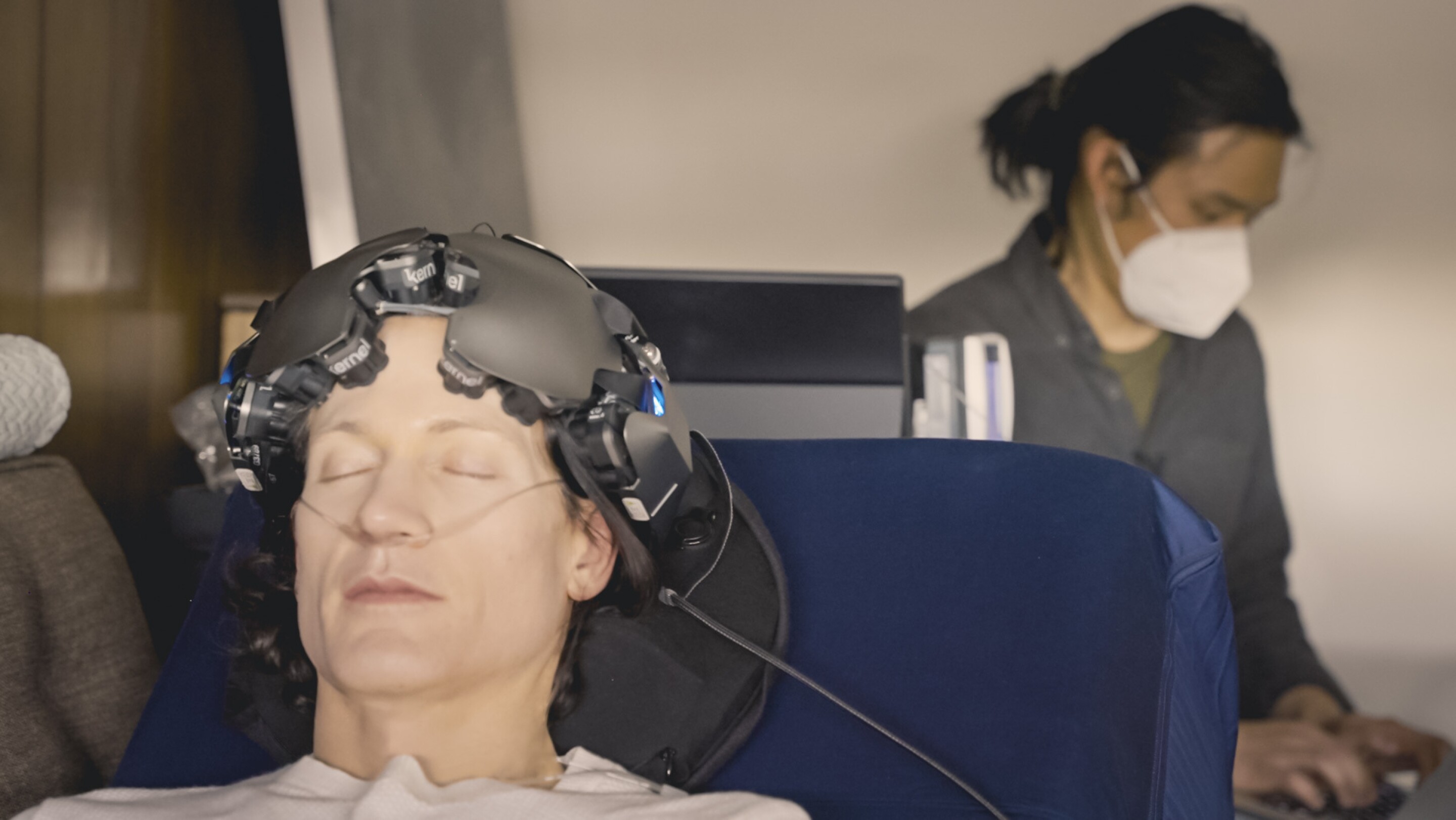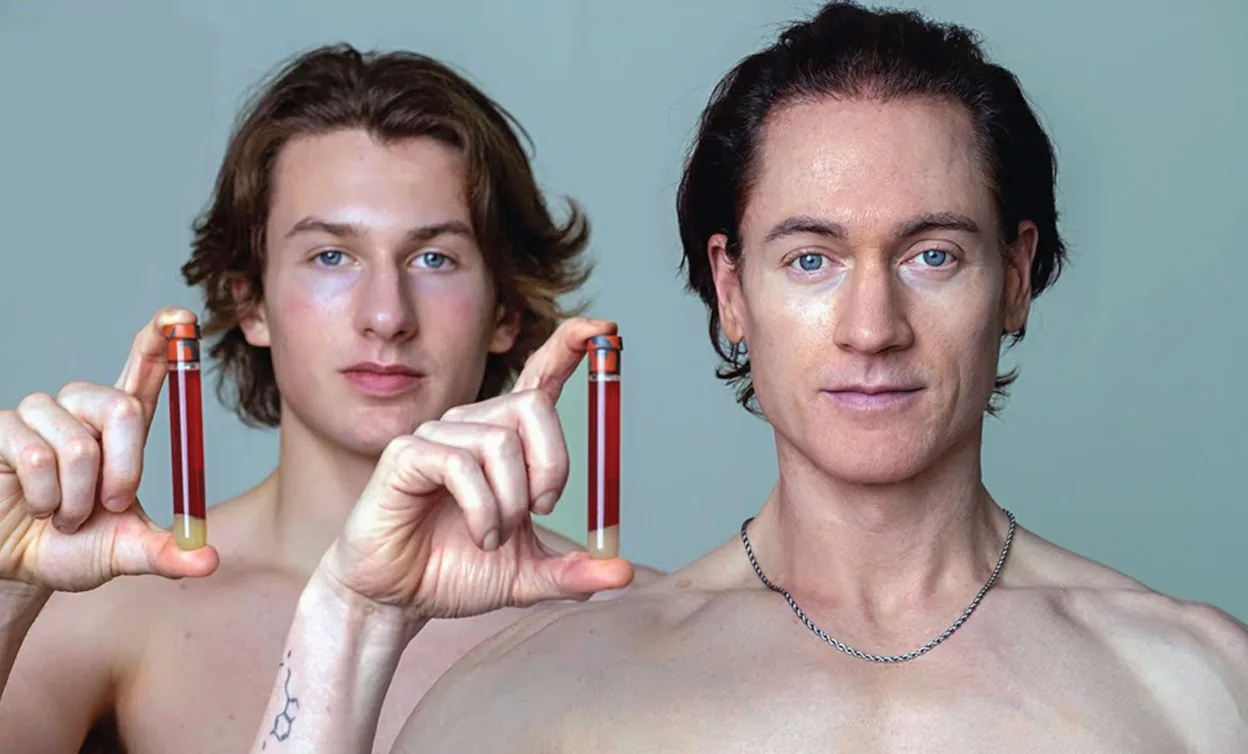Ketamine And The Brain: Bryan Johnson’s Controversial Experiment
Tech millionaire Bryan Johnson, known for his radical biohacking experiments, has sparked controversy by self-administering Ketamine and tracking its effects on his brain.

American millionaire Bryan Johnson, who gained notoriety for his outrageous biohacking experiments, is again in the limelight with his new revelation. Johnson, who said he reversed his biological age, recently tried experimenting with Ketamine, a tranquillizer for horses and an anaesthetic and published copious amounts of data on its effect on his brain activity. His findings on X (formerly Twitter) document a sudden disruption in his thought processes, and these caused a stir among scientific, ethical, and wellness circles.
Bryan Johnson’s Biohacking Journey
Bryan Johnson has become an infamous biohacker who has brought about radical life changes, caloric restrictions, and medical procedures for extending the human lifespan. He founded Kernel, a neurotechnology firm dedicated to studying brain activity, and Blueprint, a health program for maximizing biological performance. His latest venture into self-experimentation with Ketamine, however, raises questions about the lengths to which biohackers should go in their pursuit of enhancement and self-discovery.
The Ketamine Experiment: A Scrambled Brain
Johnson disclosed on X that he self-administered Ketamine and tracked his brain activity for 15 days. His goal was to analyze how the anaesthetic altered neurological functions. He likened the normal brain to a well-organized global air traffic network, where major hubs (brain regions) follow predictable flight routes. After the Ketamine administration, however, his brain activity became “completely scrambled,” resembling an air traffic system rerouting flights to less-used airports across different continents.
Key Observations from Johnson’s Experiment:
- Disrupted Neural Pathways:
- Before Ketamine use, Johnson’s brain displayed structured connectivity, similar to well-established flight routes between major airports.
- Standard patterns were disturbed post-ketamine, resulting in unorthodox neural pathways and activity redirection.
- Increased Cognitive Flexibility:
- The new pathways pointed to increased neuroplasticity.
- Johnson speculated that such scrambling could enable novel thinking modes, creativity, or problem-solving.
- Extended Aftereffects:
- His brain activity was not back to baseline immediately, with significant alterations continuing past the 15-day mark.
- This made one wonder about the extended cognitive effects of such experiments.

Scientific Perspective: The Role of Ketamine in Neurology
Ketamine’s clinic-cations, including anaesthesia and depression, that are resistant to treatment are well established. Recent research shows that moderate use of Ketamine can enhance synaptic plasticity, which can be potentially utilized to treat mental disorders like major depressive disorder, anxiety, and PTSD.
Ketamine Neuroplasticity:
- Research indicates that Ketamine strengthens synaptic links by facilitating the development of new dendrites.
- It impacts the brain’s NMDA receptors, critical for memory and learning.
- Its ability to disrupt rigid neural pathways is being explored as a treatment for conditions like OCD and chronic stress disorders.
Johnson’s self-experimentation outside of medical supervision is, however, distinct from medicinal use, which is dosed and controlled within the context of a medical doctor. His choice to monitor his brain activity raises interesting questions but also ethical issues regarding self-medication with powerful drugs.
Ethical and Social Implications
Is Self-Experimentation Ethical?
Johnson’s desire to experiment has brought back into debate the limits of self-experimentation. While biohackers feel that people should be able to test the limits of their biology, detractors warn against the dangers of self-medicating strong chemicals without the intervention of doctors.
Potential risks include:
- Long-term cognitive impairment due to repeated exposure to anaesthetic substances.
- Psychological side effects include dissociation, hallucinations, and mood instability.
- Influence on followers, as biohackers, often inspire others to attempt risky practices without medical guidance.

The Influence of Social Media on Biohacking Trends
With millions of social media followers, those interested in improving their health view Johnson’s posts widely. As beneficial as his work provides information, glamourizing drastic self-testing may trigger people to take the same high-risk actions without knowing what can occur.
Johnson’s Previous Controversial Experiments
Bryan Johnson is not new to controversy. His Blueprint lifestyle, which includes eating a carefully measured diet, taking more than 100 supplements every day, and getting regular medical tests, has raised both positive and negative reactions. Some of his previous controversial practices are:
- Plasma Exchange Therapy:
- Johnson made headlines for getting plasma transfusions from his teenage son in an attempt to reinvigorate his body.
- Sleep and Sexual Health Comparisons:
- He publicly released information about his nocturnal erections and those of his adolescent son, an act strongly criticized for its moral implications.
- Strict Nutritional Regimen:
- He carries a six-day food supply while travelling to avoid dietary disruptions.
While some admire his relentless pursuit of longevity, others see his methods as extreme and potentially obsessive.
Public Reactions and Expert Opinions
Mixed Responses from Scientists and the Public
- A few neuroscientists have commended Johnson’s interest and his work on learning about neuroplasticity but warn against making conclusions from one self-experiment.
- Critics point out that self-experimentation is deceptive and does not have the rigour of clinical studies.
- The public reaction has been varied, with some praising his openness and others doubting his sanity.
Medical Professionals’ Concerns
Physicians and scientists warn against Ketamine drug abuse such as that of Ketamine, which causes addiction and permanent neurological damage. While controlled therapeutic utilization has its benefits, indiscriminate self-experimentation is unsafe.

Conclusion: The Fine Line Between Innovation and Recklessness
Another chapter of Bryan Johnson’s biohacking experience was the trial of ketamine. His funded and disseminated work was embroiled in the scandal surrounding neuroplasticity and brain enhancement. Such practices must be disregarded if there is no medical surveillance and the ensuing risks.
As biohacking keeps stretching boundaries, there is a need for curiosity to be balanced with Ketamine. Utilization of drugs as potent as Ketamine has to be responsibly carried out, preferably in a well-regulated medical setting and not as a personal experiment.
One thing is sure as Johnson sets off on his transformational journey: his extreme pursuit of longevity and brain enhancement will continue to challenge social and scientific norms, igniting debate in neuroscience, ethics, and human potential.
In the end, his research raises important issues about human progress in the future and the responsibility of self-testing. It will take time to see if Johnson’s finding is used to create new worlds or serve as a warning, but his unafraid approach guarantees that the conversation around biohacking is never completely closed.




